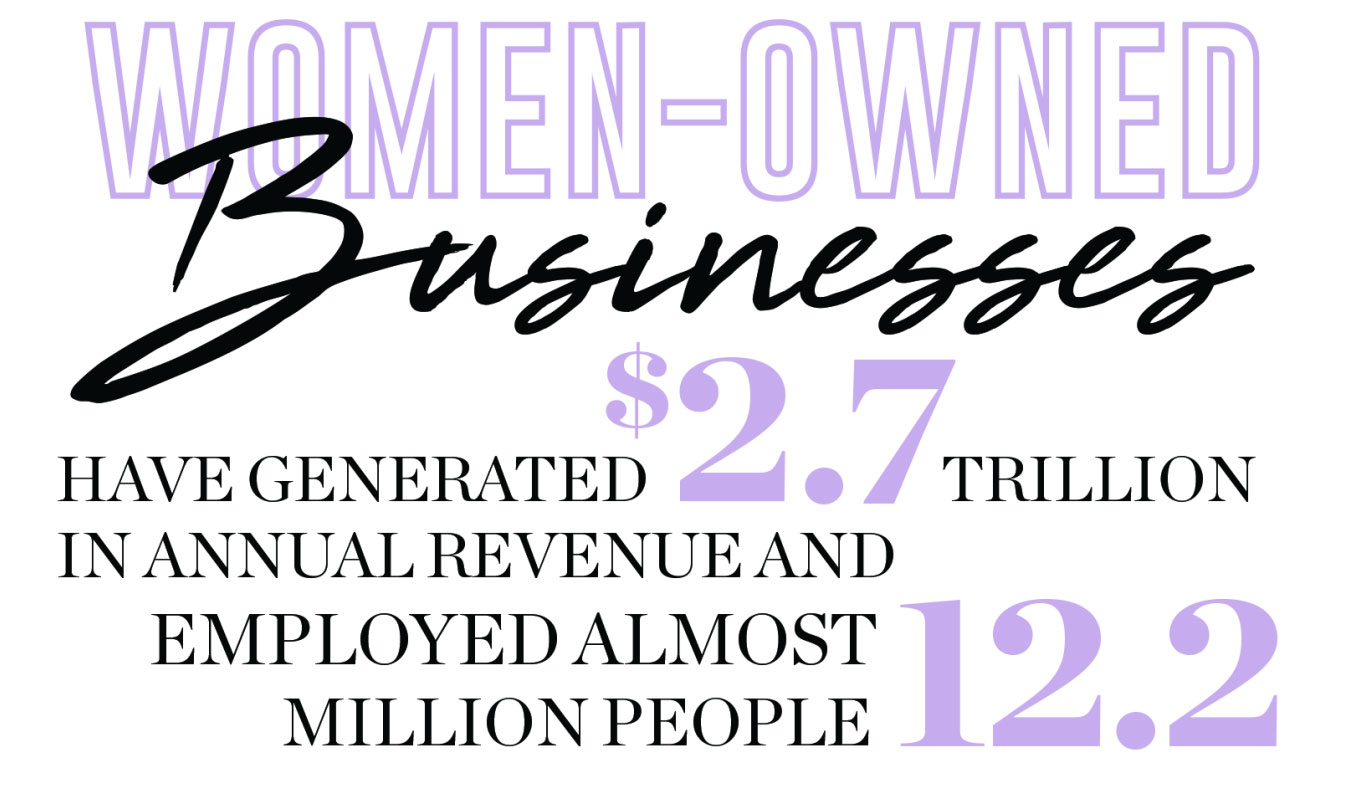The number of women-owned businesses has been steadily increasing over the past few years, with women now owning approximately 42% of businesses in the United States. This growth is significant, as it demonstrates a shift towards greater gender equality in the business world. Despite this progress, there is still much work to be done to support and empower women entrepreneurs.
The trends in women-owned businesses are diverse and dynamic. From spas, salons, fitness studios, and wellness centers that cater to diverse customer needs to organic products and specialized services. The top industries for women-owned businesses include healthcare, education, retail, and professional services. These industries offer ample opportunities for female entrepreneurs to make their mark and contribute to the economy.
As an essential component of the economy, w o m e n – o w n e d businesses have generated $2.7 trillion in annual revenue and employed almost 12.2 million people. When women entrepreneurs succeed, they create job opportunities, boost the economy, and set an excellent example for future generations of women. Despite the progress made, women entrepreneurs still face significant obstacles, including access to capital and systemic gender bias. This can manifest in various ways, including: – Unequal access to funding and
investment opportunities – Stereotypes and biases that limit women’s leadership potential – Discrimination in hiring and promotion processes. Research has shown that legal discrimination against women is correlated with the gender gap in entrepreneurship. This highlights the need for continued efforts to address gender bias and discrimination in all aspects of business.
Recent years have seen a shift towards more diverse financing avenues, including angel investors, crowdfunding, and microloans. These financing options empower women-owned businesses to access the capital needed to pursue their objectives and achieve their growth potential. According to Bank of America, female business owners anticipate attaining equitable access to capital by the year 2031. Additionally, the Small Business Administration (SBA) has delivered over $10 billion in capital to women-owned small businesses through its 7(a) and 504 loan programs in 2021 and 2022. These efforts to provide greater access to funding resources are expected to continue driving growth for women-owned businesses in 2024 and beyond.
Advocacy and support for women-owned businesses have also been instrumental in driving growth in recent years.

The passage of the Women’s Business Ownership Act in 1988 helped to eliminate discriminatory lending practices and increase access to capital for women entrepreneurs. Today, organizations like the National Association of Women Business Owners (NAWBO) and the Women’s Business Enterprise National Council (WBENC) provide advocacy, education, and other resources to support women-owned businesses.
Technological advancements and digitalization have also played a significant role in driving growth for women-owned businesses. Women entrepreneurs are launching boutique shops, online stores, and fashion brands that cater to diverse customer needs, from eco-friendly and sustainable products to personalized and customizable offerings. Women, minority, and veteran-owned businesses have high adoption rates of technology and are highly optimistic about the role technology will play in their future growth. It has been reported that companies with an engaged Chief Digital Officer are 1.6 times more likely to report a successful digital transformation.
Balancing work and family responsibilities is yet another challenge that many women-owned businesses face. The demands of running a business can be particularly challenging for women who are also responsible for caregiving and household duties. While some women may choose entrepreneurship as a means of achieving greater work-life balance, the reality is that managing both can be difficult. More support is needed to help women-owned businesses navigate these challenges, including access to affordable childcare, flexible work arrangements, and other resources that can help them achieve a better work-life balance.
One key strategy for success for women-owned businesses is leveraging networks and mentors. Female entrepreneurs can benefit greatly from building strong relationships with other business owners, both within and outside their industry. By connecting with like-minded individuals, women entrepreneurs can gain valuable insights, advice, and support that can help them navigate the challenges of running a business.
Finding a mentor who has experience in their field can provide invaluable guidance and help women entrepreneurs avoid common pitfalls. Programs like the Amber Grant and the Women’s Business Summit offer resources for female entrepreneurs to connect with other business owners and mentors.
Continuous learning and skill development are also critical strategies for success for women-owned businesses. As industries and markets evolve, it’s essential for entrepreneurs to stay up to date with the latest trends and technologies. This can involve taking courses, attending workshops, or seeking out other educational opportunities. By constantly improving their skills and knowledge, women entrepreneurs can position themselves for success and better adapt to changes in their industry. Programs like those offered by the Small Business Administration can provide access to training and education programs to help women entrepreneurs continuously improve their skills.









